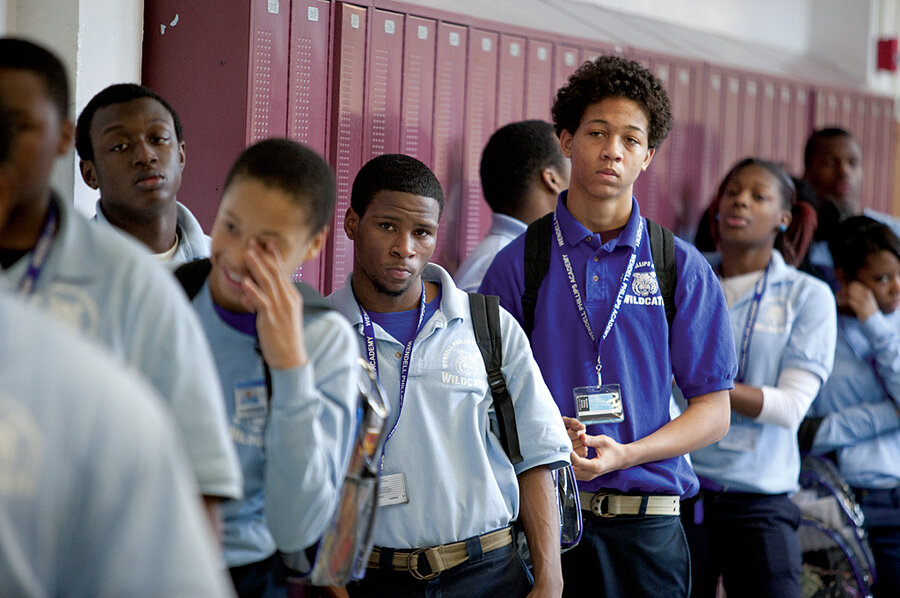A balance worth tipping
Loading...
Sometime around Day 1 in our lives, we begin wondering what’s fair and what’s unfair. Are Mom and Dad playing favorites with the ice cream? How can that kid cut in line? C’mon, Mr. SUV, let me into the traffic.
We’re constantly weighing fairness, campaigning for it, and judging it. The perception of unfairness may start as mild annoyance, but it can make or break empires. Get it right and you’re Solomon. Get it wrong and you’re Marie Antoinette.
So basic is the desire for fairness and the revulsion at unfairness that scientists are increasingly convinced that it is innate. A 2008 study by researchers at the California Institute of Technology indicates that the drive for fairness is tied to people’s emotion and that, instead of learning to be fair, humans are born that way. Experiments show that people feel worse when they perceive inequity and better when justice is done. Humanity, in effect, is always putting the universe on trial.
In a Monitor cover story, Stacy Teicher Khadaroo examines the problem of fairness in the meting out of school discipline. School is crucial in transferring civilization from one generation to another. It is where young people determine whether social rules are worth supporting, whether society is going to give them a fair shake, whether centuries-old wisdom really is wise – whether, in short, they should contribute to the culture they were born into or walk away from it.
A teacher’s interest, an inspiring class, supportive fellow students – these slowly encourage adolescents to opt in. A clash with authority can derail that process, especially if a perception of unfairness takes hold. This is where the statistics are troubling.
There are significantly higher rates of suspensions and expulsions for African-Americans, Hispanics, and those with disabilities than for white students in American schools. Meanwhile, discipline has shifted in recent years from after-class detention and stern warnings to “zero tolerance” of bad behavior. The unintended consequence is that rising numbers of young people don’t get the kind of do-overs that were once common in school. They get bounced. They’re on the streets, heading toward the criminal-justice system, and convinced that life is unfair.
As you’ll see in Stacy’s accompanying article, however, that innate human drive to see justice done is actively trying to counteract that problem. Conflict-prevention programs in Oakland, Calif., and elsewhere aim to shift the view of students, to encourage them that there is something to live for, that life isn’t unfair, and that school is worth their time and attention.
Fair treatment gives rise to hope. But for many people – especially those traumatized by broken homes, violent neighborhoods, or run-ins with the police – hope can’t simply be switched on. It has to be earned through one-on-one encounters and trust-building in programs such as the “restorative justice” initiative in Oakland’s public schools.
If we come into this world wired for fairness, evidence of it convinces us that we aren’t mistaken. That, in turn, builds a defense against the inevitable moment that unfairness asserts itself. A kid will cut in line. A driver will be rude. Injustice will occur. But if an enemy forgives, a judge shows mercy, a teacher takes interest, the balance tips back. In a civilization worth supporting, fair outweighs unfair.
John Yemma is editor of the Monitor.






